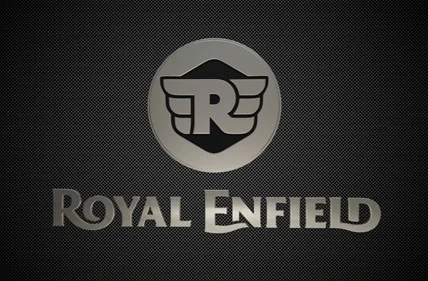Let’s take a thrilling ride through the bustling streets of India’s business landscape. It’s a land painted with a blend of company structures, each uniquely colored with its own quirks and strategies. From the colossal giants we call public limited companies to the agile one-person start-ups, India offers a colorful palette of corporate entities that fuel its roaring economic engine. These diverse company types, each with its own charm, make up the robust spine of India’s economy and embody its entrepreneurial heart. So, are you ready to venture into the lively maze of India’s corporate world? Let’s dive in and see how many types of companies are there in India. Here we go.
Company Classification Under the Companies Act, 2013

1. One-Person Company (OPC)
Imagine you’re a lone ranger, a maverick entrepreneur, thriving on the thrill of riding solo on the vast plains of the corporate world. That’s where the One-Person Company (OPC) comes in, a gem introduced under the Companies Act 2013. This is the corporate equivalent of a solo artist, where you can run the show independently, yet with the armor of limited liability protection. This hybrid model gives you the autonomy of a sole proprietorship and the perks of a robust corporate structure. An OPC is a perfect suit for solo entrepreneurs who want to keep the steering wheel firmly in their hands while enjoying the shield of limited liability and corporate identity.
2. Private Limited Company
It’s the backbone of India’s corporate structure and the go-to choice for small to medium businesses. Picture it like a private club, where membership (shares) is restricted and no open invites (public subscriptions to securities) are allowed. Starting this family requires a minimum of two members, but don’t worry about overstuffing the house; you can have up to two hundred members. Private Limited Companies shield their members from complete financial risk (limited liability), making them the darling of startups. Its scalability and easy fundraising abilities make it as irresistible as a well-baked apple pie on a Sunday afternoon.
3. Public Limited Company
This type of company is like a massive theme park, open to the public and traded freely on the stock market roller coaster. Setting up this park requires at least seven people, but there’s no cap on maximum capacity, making it the corporate version of a limitless sky. Unlike a Private Limited Company, which operates more like a private party, a Public Limited Company is a grand public festival. It can sell its tickets (shares) to the public via an Initial Public Offering (IPO), raising capital as vast as an ocean.
4. NGOs
This is the organizational embodiment of a benevolent figure working for the greater good. Imagine a monk dedicating his life to the welfare of others, that’s what Section 8 Companies are in the corporate arena. They stand with the mission of promoting fields like art, science, commerce, charity, religion, and any other utility for society. These entities are not in the game for profit. Instead, they use their income as a force for good, propelling their mission like a spaceship fuels its journey.
Company Classification Based on Listing
1. Listed Company
Imagine going to a bustling marketplace where items are up for sale, people are shouting their wares, and there’s a lot of buying and selling going on. This is like a listed company, specifically a public one whose shares are being traded on an official stock exchange, pretty much like products in a market. They’re under the spotlight, abiding by more rules and being more transparent than their counterparts. Yes, they enjoy a solid reputation and more visibility but remember, all that glitters isn’t gold. They’re under the microscope and the watchful eyes of regulators and the public aren’t always easy to handle.
2. Unlisted Company
On the other hand, imagine a private yard sale that’s not open to everyone, where transactions are more exclusive. This is similar to an unlisted company, one that isn’t listed on any stock exchange. Most private limited companies and One-Person Companies (OPCs) are in this category. They’re like secret societies, operating away from the hustle and bustle of the public scene.
Company Classification Based on Control
1. Holding Company
Now, let’s shift gears and talk about types of companies based on control. Have you ever played with Matryoshka dolls? The larger one contains a smaller one, which contains an even smaller one, and so forth. In the business world, we have a similar concept. A holding company is like that larger Matryoshka doll, it’s a parent entity (be it a corporation, limited liability company, or limited partnership) that owns a substantial chunk of voting stock in another company, enough to steer the ship and control its policies and management.
2. Subsidiary Company
This type of company is under the control of another company, also known as a parent company or a holding company. If the parent company owns more than half of the voting power of the subsidiary, they have the remote control. The parent can play the show, much like a video game, controlling the actions and directions of its subsidiary.
Company Classification Based on Liability
1. Limited By Shares
Imagine this as a members-only club, where each member, or shareholder, holds a piece of the pie, also known as ‘shares.’ Now, in this particular business type, known as a company limited by shares, each member’s responsibility is akin to the size of their piece of the pie. So, if things go a bit pear-shaped and the company starts sinking, the club members, or shareholders, are only liable to cough up the amount that’s still due on their shares. The good news is, they’re not on the hook for the entire company’s debt. This type of setup is like the bread and butter for most profit-making companies.
2. Limited by Guarantee
In this setup, the liability of the members is restricted to a predetermined amount that they’ve pledged to chip in if the company hits a rough patch and has to shut the shop. It’s a bit like making a pact at a charity run. You commit to donating a certain amount, but you’re not expected to go beyond that, no matter how long the run ends up being. This setup suits non-profit and charity organizations quite well, where profit isn’t the primary goal.
3. Unlimited Company
Finally, we move to the most adrenaline-pumping zone of all, the Unlimited Company. Here, the members, or the daredevils, as we might call them, have no safety net. Their liability is unlimited. Should the company run into a financial storm and get capsized, all members have to dive in to cover the company’s debts. It’s like being on a high-risk rollercoaster ride where the potential for loss is as high as the thrill. Owing to this high-stakes game, this type of company is not as common. After all, not everyone’s a fan of skydiving without a parachute, right?
Conclusion
As the business stage continues to transform in this richly diverse nation, getting a handle on the details of these different company types becomes a must-have playbook for any business game plan. However, remember that each of these company structures has their distinct benefits and challenges, and serves specific business needs and goals.













